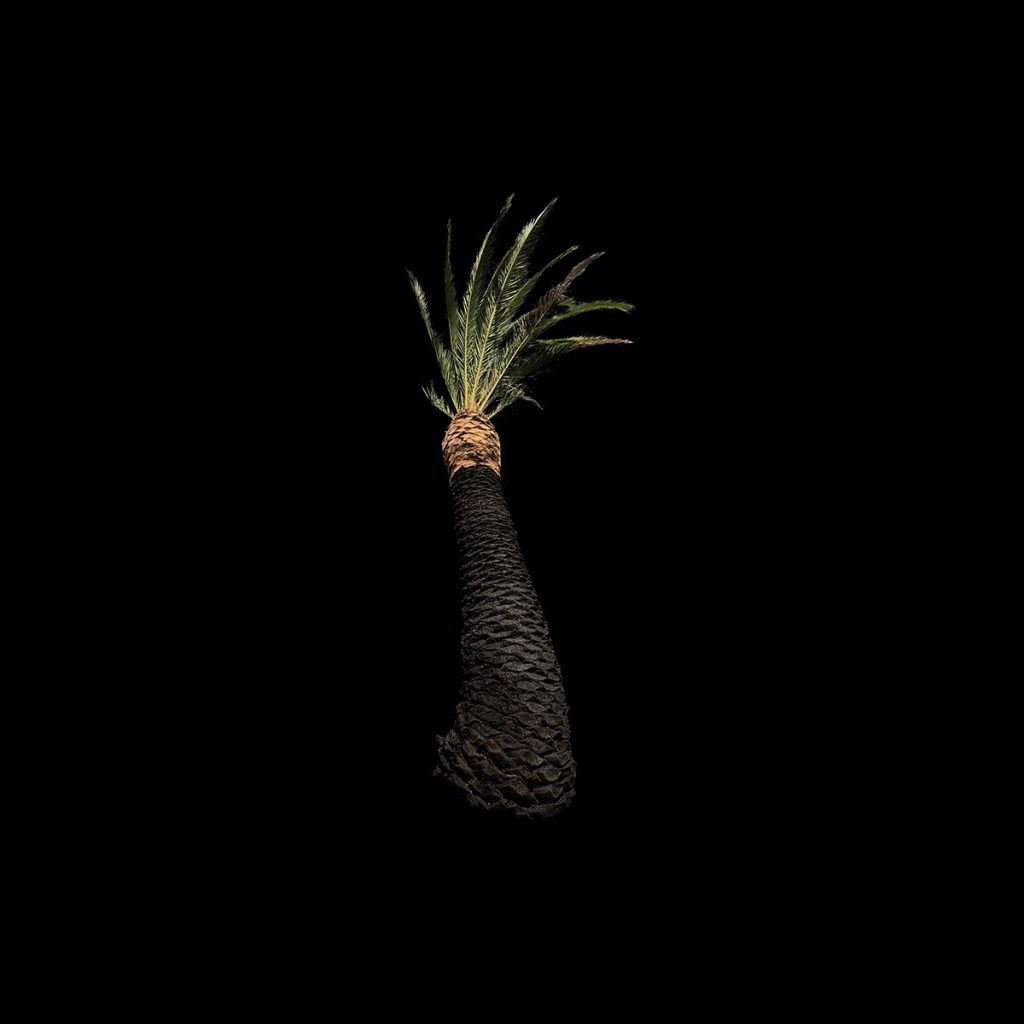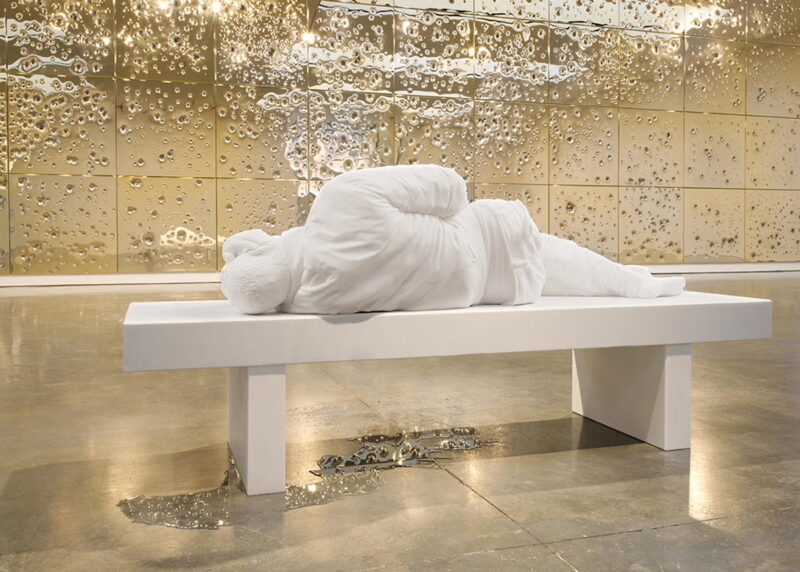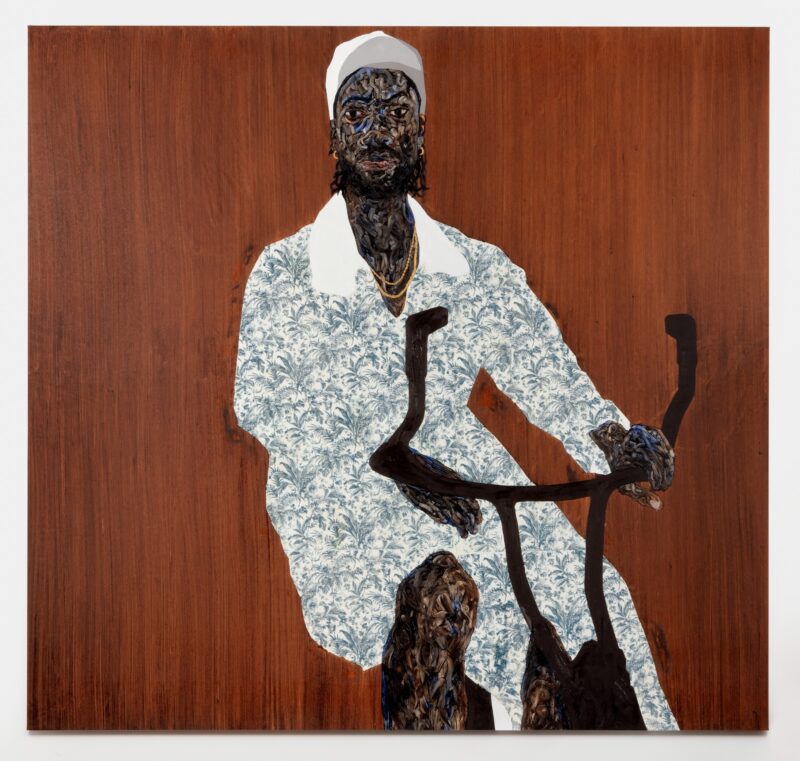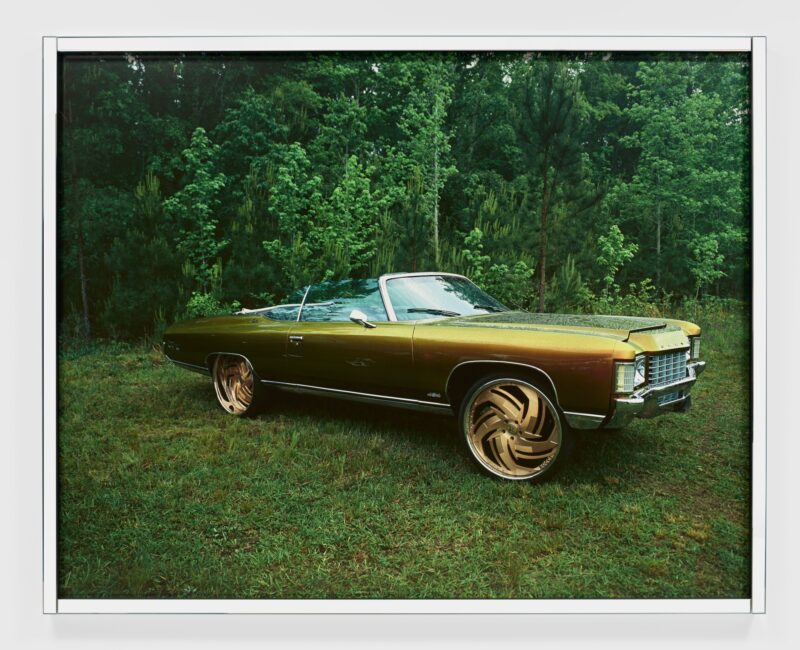A Burn Scar Visible from Space is an upcoming exhibition of photographs from Taryn Simon’s ongoing series Black Square, begun in 2006.
 Taryn Simon, Black Square XXIII. Phoenix canariensis, a date palm native to the Canary Islands, is an invasive species in the state of California. The Los Angeles County Fire Department lists Phoenix canariensis as a fire hazard that should be removed from the vicinity of structures. The scale and severity of California’s fires have escalated markedly since the 1980s due to overgrowth resulting from aggressive fire suppression tactics, climate change, and increased residential construction in forested areas. The Woolsey Fire, which began on November 8, 2018, burned 96,949 acres of land in Los Angeles and Ventura counties, leaving a burn scar that is visible from space., 2019, from the series Black Square, 2006–
Taryn Simon, Black Square XXIII. Phoenix canariensis, a date palm native to the Canary Islands, is an invasive species in the state of California. The Los Angeles County Fire Department lists Phoenix canariensis as a fire hazard that should be removed from the vicinity of structures. The scale and severity of California’s fires have escalated markedly since the 1980s due to overgrowth resulting from aggressive fire suppression tactics, climate change, and increased residential construction in forested areas. The Woolsey Fire, which began on November 8, 2018, burned 96,949 acres of land in Los Angeles and Ventura counties, leaving a burn scar that is visible from space., 2019, from the series Black Square, 2006–
Archival inkjet print, framed: 31 ¾ × 31 ¾ inches (80.6 × 80.6 cm), edition of 5 + 2 AP
© Taryn Simon
Pink and yellow slips of paper announce the results of the ballot count in Haringey, London, for the European Union membership referendum; a billion-dollar Zimbabwean banknote marks the rapid decline of the nation’s currency; an empty 80-foot pedestal in New Orleans recalls the sanctioned removal of a statue of Confederate army commander Robert E. Lee by a crew wearing bulletproof vests; a charred palm tree, brought to California from the Canary Islands to populate large residential estates, has both fueled and survived a devastating wildfire; a Picturephone from 1964, deemed unnecessary at the time of its release, is an obsolete prototype for present-day video communication; and the dark power of 3-D printing is made clear with a gun named The Liberator, the plans for which can be downloaded by anyone with a Wi-Fi connection.
In the Black Square photographs, Simon presents objects, documents, and individuals in a black field given the same dimensions as Kasimir Malevich’s 1915 painting of the same name. Selected without any intentional categorization, Simon’s subjects form a randomized index of human invention and activity. They are fragments of recent history—detached from context and freighted with anxiety.
In 1915, World War I was far from over. Chlorine gas was used as a war weapon for the first time. Pluto was photographed, though not yet discovered. It was the eve of the October Revolution. Malevich described his work—a thickly painted black square, set within a white border—as the “icon of [his] era,” an eclipse for the modern gaze. This description set his painting in direct opposition to (or, perhaps, in alignment with) popular religious icons.
In 2019, icons are to be found not only in a church’s candlelit interior: political leaders, scientists, and activists are icons; the apps and logos on our phone screens are icons. In a mutating echo of Malevich’s Black Square, every major cellular device and digital platform has its own version of a black square emoji, but none agree on what it represents.
Witnesses to both ingenuity and mortality, most of the objects in Simon’s photographs will outlive us all. This is especially true for Black Square XVII, an 80-by-80-by-80-cm cube containing a mass of vitrified nuclear waste that will remain in Russia’s State Atomic Energy Corporation until the year 3015, when it will finally be safe for human observation. Charged with the uncertainties of the future, Simon’s black squares reveal what we have done, and ask what we’ll do next.
TARYN SIMON A Burn Scar Visible from Space August 19–September 21, 2019 17–19 Gagosian Davies Street, London
About The Artist
Taryn Simon was born in 1975 in New York, where she currently lives and works. Collections include Centre Pompidou, Paris; Tate Modern, London; Museum für Moderne Kunst, Frankfurt am Main, Germany; Los Angeles County Museum of Art; Metropolitan Museum of Art, New York; and Solomon R. Guggenheim Museum, New York. Institutional exhibitions include A Living Man Declared Dead and Other Chapters, Tate Modern, London; Neue Nationalgalerie, Berlin (2011, traveled to Museum of Modern Art, New York; Museum of Contemporary Art, Los Angeles; Corcoran Gallery of Art, Washington, DC; and Ullens Center for Contemporary Art, Beijing, through 2013); Contraband, Centre d’Art Contemporain Genève, Geneva (2011); A Polite Fiction, Fondation Louis Vuitton, Paris (2014); Rear Views, A Star-forming Nebula, and the Office of Foreign Propaganda, Jeu de Paume, Paris (2015); 56th Biennale di Venezia (2015); Action Research / The Stagecraft of Power, Garage Museum of Contemporary Art, Moscow (2016); Galerie Rudolfinum, Prague (2016); A Soldier Is Taught to Bayonet the Enemy and Not Some Undefined Abstraction, Albertinum, Dresden, Germany (2016); An American Index of the Hidden and Unfamiliar, Louisiana Museum of Modern Art, Humlebaek, Denmark (2016–17); An Occupation of Loss, Park Avenue Armory, New York (2016); The Innocents, Guild Hall, East Hampton, NY (2017); Paperwork and the Will of Capital, Musée d’art contemporain de Montréal (2017); Shouting Is Under Calling, Kunstmuseum Luzern, Lucerne, Switzerland (2018); A Cold Hole + Assembled Audience, MASS MoCA, North Adams, MA (2018); and An Occupation of Loss, presented by Artangel, London (2018).







